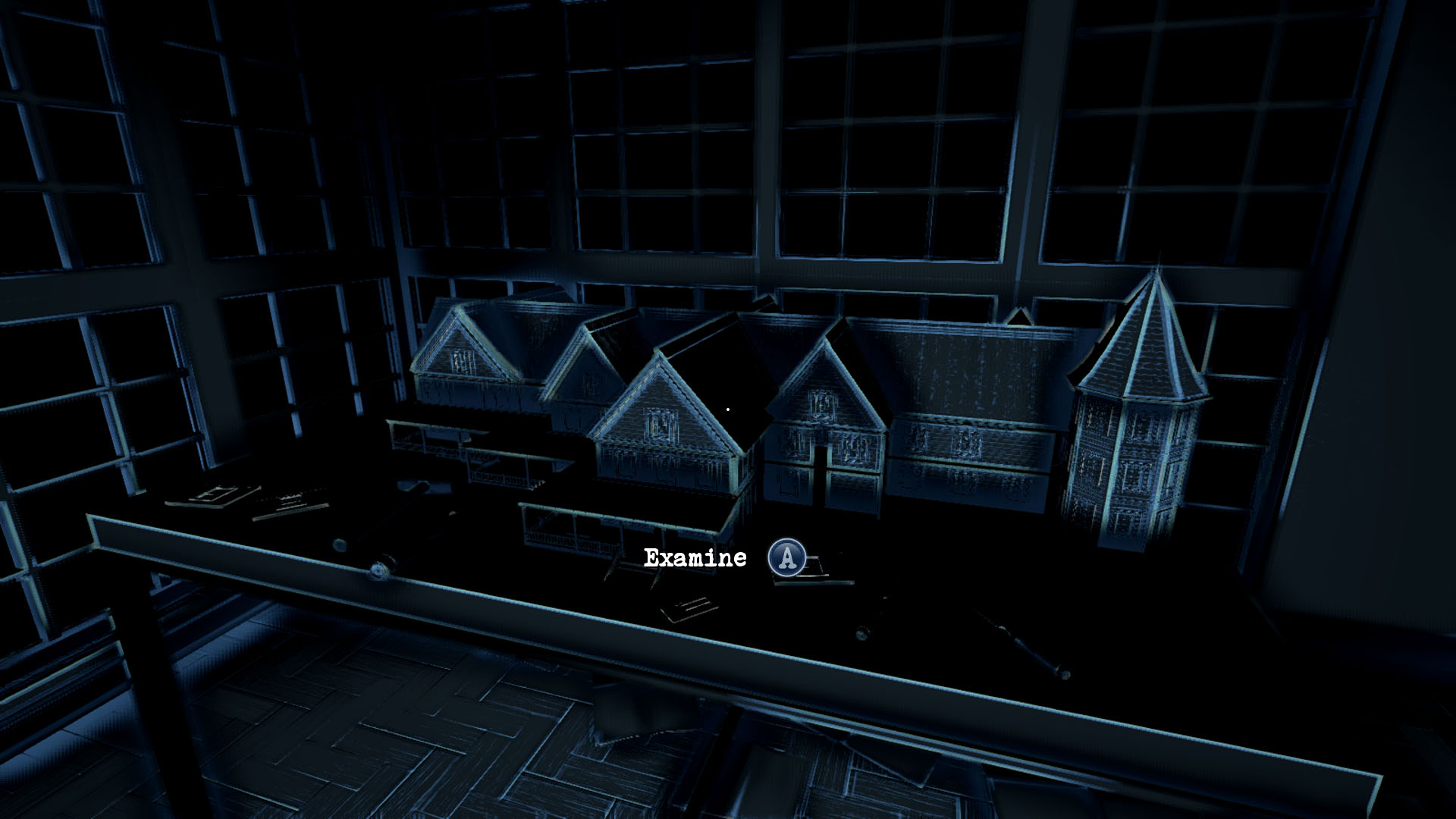“Walking Simulator” is not a term that I consider to be derogatory. In fact, it’s one of my favorite styles of gameplay in video games. A walking simulator game is generally a game that doesn’t have a lot of interactivity like: driving, combat, or anything else that involves button-mashing. It’s a game where, for the most part, you walk through a setting, as a story unfolds. There’s generally very little you can do to “fail” or “lose” the game. If you’re someone who can watch a movie alone in the dark, in total silence, you might enjoy this kind of game.
I might even go as far as to call this style of game the Hitchcock of video games. Because they rely more heavily on the player’s imagination, situations, shadows, sound effects, music, and other more subtle elements for suspense, rather than overt action and violence. Perception also departs into new territory by having you take control of a main character who is blind, which is the premise of the main game mechanics and visual style (see screenshots below), that has you using a cane to tap around the environment so that you can echolocate and feel your way through the game.
Early in the game, I was admittedly a little unsure. The game didn’t feel very scary. There didn’t appear to be much peril one could get themselves in. This was only a problem because and emphasized by the fact that there were a lot of hiding spots and crouching mechanics for apparent dangers to come. Although, at almost no point throughout the entire game was it ever required to use stealth or hide. I did in fact get killed a few times, but at no loss to anything really. In the event of dying, the game just continues right where you left off without any penalty.
It was as though the game’s default difficulty setting was on Easy, where the AI aggressiveness of enemies is almost non-existent. Unfortunately, there was no actual difficulty option present in order to increase the challenge. This was all a little confusing until I discovered some old test footage of the game as it was originally intended:
Unfortunately, everything involving the AI being much more aggressive, needing to hide, the ability to distract enemies with noise misdirection in order to escape, was all removed from the game. Digging into the backstory of the game’s inception a bit more, I found that it started as a Kickstarter campaign. This might explain why the plug was pulled on some of these features. Independent games like this (which I love), often suffer budget and time constraints. It happens.
Even so, the game picks up and gets a lot more interesting and creepy as you progress, especially in Chapter 3, which feels heavily influenced by the Puppet Master movies and is very cool and fun. While the game’s ambition (based on the above video) was originally closer to something like Outlast and which would have made it much scarier and challenging, it was still enjoyable with it being pulled back to a more minimalistic game.
For only around $20 (and available on PC, Xbox One, and PS4), and despite not receiving very good reviews, I personally think it’s a pretty good little independent game overall at that price. I certainly know developer The Deep End Games must have poured their hearts into it. And an interesting tidbit, the lead creators of the game at the studio also happen to be a married couple who you can learn more about in this IGN interview:
Not to leave any stones unturned, here’s a strange short related to what could have been extended gameplay (if they would have been able to raise more money). Or now that the game has been released and the developers have made some money, perhaps it’ll be possible to produce anyway and come as future DLC for the game:
Snaps of my journey though the game:
Support Halloween Love
If an item was discussed in this article that you intend on buying or renting, you can help support Halloween Love and its writers by purchasing through our links:
(Not seeing any relevant products? Start your search on Amazon through us.)


































